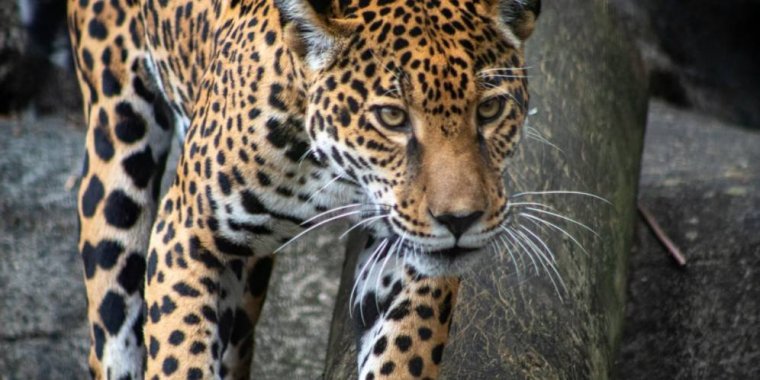| News / Science News |
Mammal loss threatens Latin America ecosystem benefits
Mammal loss is accelerating across Latin America, threatening the delicate ecosystem balance that ultimately provides communities with food, shelter and livelihoods, new research warns.

The jaguar is the Americas’ largest feline, reaching up to more than 100 kilograms and almost two meters long. Photo: Joshua J. Cotten/Unsplash
The extinction or decline in the populations of mammals — particularly the largest of these animals — can have far-reaching consequences for the natural processes of ecosystems, such as seed dispersal, pollination and even oxygen production.
‘Ecosystem services’ are the benefits that people and communities derive from the environment — clean air and water, food and materials, as well as cultural and spiritual services.
Researchers used data from the International Union for Conservation of Nature (IUCN) and a range of literature to examine the distribution of more than 1,000 mammal species across the Neotropical region. This region is one of the six major biogeographic areas of the world and extends across Central America, the Caribbean and South America.
Modelling a scenario where all critically endangered species in Latin America died out, or where the populations of vulnerable mammals were halved, the study argues that the ecosystem services that would be most affected would include ecotourism, soil formation, disease control and protein acquisition by traditional peoples.
This could snowball into increasing species loss and greater impact on green areas, say the authors.
Adriano Chiarello, an expert in Neotropical mammals and a professor of conservation biology at the University of São Paulo in Ribeirão Preto, says this scenario would be dangerous. He says ecosystems services provided by mammals are essential for the maintenance of native forests.
“Each species that dies signifies the loss of a symbiotic relationship with the forests, ultimately weakening their capacity for perpetuation. Forests are not just made of plants, but also of the animals that live within them,” Chiarello, who was not involved in the study, tells.
“Losing southern muriquis [a critically endangered primate] and tapirs means altering the carbon stock systems of our biosphere, which means accelerating climate change and, ultimately, the collapse of our societies,” says Fabio Olmos, a zoology expert and Latin America director for Permian Global, a firm focused on protection and recovery of tropical rainforest to mitigate climate change.
Seeds from large, ancient and dense trees — the main carbon sinks in tropical forests — are dispersed by the medium and large mammals that are most affected by hunting and human activities.
If mammal species are lost, “locals lose their access to animal protein and will look for sources in other places,” says co-author Carlos Peres, from the universities of East Anglia in the United Kingdom and Paraíba in Brazil.
“This could feed deforestation because the tendency is to slash forests to herd cattle — which can change a whole ecosystem and quicken climate change processes.”
In another study published in Nature Scientific Reports in September, the same team found that Latin America has already lost about 60 per cent of its larger mammals (weighing more than one kilogram) in the past 500 years.
Larger species are more vulnerable to extinction because they reproduce more slowly, have a longer incubation time, fewer calves per birth and take longer to become adults. And, smaller species often depend on processes determined by larger ones.
“The white rhinoceros in Africa, for example, feed and step on grassy regions, flattening those areas — which are also home for antelopes, birds and small rodents,” says Olmos, who was not involved in the study.
“If the white rhinoceros disappears, these other species disappear too, since they depend on the rhino to transform the landscape in which they live. (SciDev.Net)
YOU MAY ALSO LIKE





